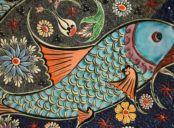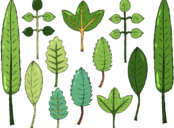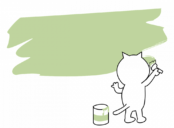Bushes Trimmed Into Animal Shapes: Exploring the Art of Topiary

Introduction
When strolling through a well-tended garden or park, one might chance upon a remarkable sight – bushes shaped like various animals, impeccably crafted and artistically pleasing. This art form, known as topiary, has a long and intriguing history, dating back to ancient times. In this article, we will delve into the world of topiary, exploring its various forms, popularity, and the unique characteristics that set different creations apart from one another. Additionally, we will examine the advantages and disadvantages associated with this art form. Whether you are an admirer, a potential enthusiast, or simply curious, prepare to be captivated by the charms of topiary.
Overview of Topiary Art

Topiary involves the deliberate shaping and pruning of shrubs and trees to create sculptural forms, often resembling animals, people, or abstract designs. This horticultural practice combines artistic talent and gardening expertise to bring life and whimsy to landscapes. Artists skilled in topiary use techniques such as shearing, careful cultivation, wiring, and even grafting to manipulate the growth of plants into desired shapes, transforming ordinary greenery into extraordinary living sculptures.
Diverse Forms and Popularity
Topiary manifests in various forms, from simple geometric shapes to intricate, lifelike animal sculptures. The artistic freedom offered by this art form allows for an endless array of possibilities. Some popular topiary designs include animals like elephants, peacocks, dogs, and even mythical creatures such as dragons.
The popularity of topiary has increased steadily over time, often gracing public parks, grand estates, and gardens worldwide. It has become particularly sought after in urban spaces, where it adds beauty and tranquility to bustling surroundings. The ability to transform a simple garden into a living work of art has proven irresistible to many garden enthusiasts, igniting a resurgence of interest in this age-old craft.
Quantitative Measures of Topiary Art
While topiary’s artistic value is often subjective, quantitative measures can provide insights into its impact. Factors such as the number of topiary installations in public spaces, the economic value generated by topiary-related tourism, and the growth of topiary-related social media communities can serve as indicators of its popularity and reach. By examining these metrics, we gain a perspective on the lasting influence of this timeless art form.
Differences within Topiary Styles
Despite sharing the common theme of shaping bushes into various forms, topiary styles often differ significantly. Regional influences, cultural aesthetics, and individual artists’ preferences all contribute to diverse interpretations of topiary art. While some creators strive for realism, using meticulous attention to detail to replicate animals or human figures, others embrace abstraction, presenting imaginative, unconventional designs. By understanding these distinctions, one can better appreciate the broad spectrum of topiary artistry.
A Historical Perspective on the Pros and Cons of Topiary
Throughout history, topiary has endured both praise and criticism, highlighting its contested position within the artistic world. Advocates argue that topiary adds a touch of elegance and natural beauty to landscapes, elevates the spirit, and stimulates imagination. They also emphasize the meticulous craftsmanship and patience required to produce high-quality topiary. However, critics voice concerns regarding the potential negative impact on plant health, the challenges of maintaining intricate designs, and the potential for topiary to overshadow other elements within a garden. By exploring both viewpoints, we gain a nuanced understanding of the advantages and disadvantages associated with this art form.
Conclusion
In conclusion, topiary represents a unique fusion of horticulture and artistry, transforming ordinary bushes into captivating sculptural forms. With a wide array of designs, its popularity continues to grow, gracing public spaces and private gardens alike. While quantitative measures provide insights into its reach, understanding the distinct variations within topiary styles allows for a deeper appreciation of this versatile art form. By examining the historical perspectives on topiary, we gain insight into the pros and cons associated with its practice. So, next time you encounter a meticulously shaped bush in the form of an animal, take a moment to admire the craftsmanship and dedication that went into creating this enchanting art form.
[INSERT VIDEO HERE: A short clip showcasing the intricate process of creating a topiary sculpture, from initial shaping to final trimming.]





















